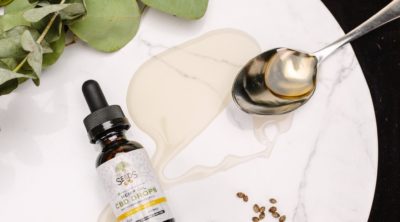
If you have ever been stung by a bee, you would already know, how painful the sting is. The swelling and the pain can be excruciating and can last for quite some time, if treatment is not administered on time. This article highlights some effective bee sting treatment options.
Bee stings are not only painful, they can also be deadly. If the victim is allergic to bee stings, the bite can trigger a severe allergic reaction called anaphylaxis. The bee sting treatments given below are the ones, that are most effective. There are other traditional remedies, that are not mentioned in this article, because their medical effectiveness has not been proven in the tests conducted on them.
First Thing to Do
The very first thing to do in case of a bee sting is to remove the bee stingers immediately. These get lodged in the sting wound, after they detach from the bee. The longer these remain in the victim’s body, the more severe is the sting reaction. Hence, it is more important to remove the stingers as soon as possible and it doesn’t matter how they are removed.
Bee Sting Allergy Treatment
If the victim is allergic to bee stings, he will probably be carrying an epinephrine auto-injector called Epipen. If he is, help him administer the shot. If he is not, call for immediate medical assistance without waiting for any symptoms to appear. The signs of anaphylaxis can be seen in the form of severe itching, redness, hives and shortness of breath. Anaphylaxis is fatal, so be quick with whatever you do to help the victim. Antihistamines, such as Benadryl, can slow the anaphylaxis, but they will not completely stop it.
Bee Sting Home Treatment
Non allergic victims will show some local reactions, such as localized redness, swelling and pain. The pain may go away quickly, but the swelling may last for about a week. For non allergic victims, the following are some effective first aid treatments:
- The local swelling can be lessened by applying an ice pack to the swollen area.
- Antihistamines or calamine lotions (any calamine lotion with analgesic) help soothe the itching, while the tenderness can be relieved by applying a bee sting swab.
- Ibuprofen and acetaminophen offer minor pain reliefs in case of bee stings.
- If the bee sting reaction lasts for over a week, doctors suggest tetanus immunization. In fact, if more than 10 years have passed since your last tetanus booster shot, you should go get one, just as a precautionary measure.
- Rubbing a lemon slice and alcohol works wonders on the bee sting pain.
- Vinegar, baking soda and meat tenderizers alleviate almost all the bee sting symptoms.
- Believe it or not, toothpaste can also sooth bee stings.
- Hydrocortisone cream, when applied at regular intervals of 4 hours, relieves almost all the symptoms, but in a smaller degree.
- Another effective remedy for bee sting is to wrap medicated pads around the affected part.
- Take a bowl, mix fresh papaya, St. John’s Wort oil, bentonite clay and add some water. Now, apply the paste on the affected area to remove the venom.
- Sage tea is another home remedy, which is used as an astringent. In case of a bee sting, you can rub it on the sting site.
- Aloe vera is one of the best anti-itch natural remedies, which can be rubbed on the sting.
- Applying a few drops of pure lavender oil to the site will definitely provide you relief from itching and pain.
- Crushed mint leaves when placed on the sting site, will provide quick relief.
Traditional remedies like damp pastes of tobacco, salt, baking soda, clay, garlic, urine and onions are believed to help bee stings. Though, these do have the tendencies to neutralize the acidic bee sting venom, it is very unlikely that these remedies are of any use. This is so because these are topical treatments, that do not affect the venom, that is injected deep within the skin.
When using any of the treatments mentioned above, make sure you administer them in a timely manner. Delay gives the venom time to spread and so these treatments should not be delayed at all. Don’t wait for any symptoms to appear. If you do not know the allergy status of the victim, just rush him/her to the nearest hospital. Better still, just stay away from the wrath of the bees.
Disclaimer: This article is for informative purposes only, and should not be used as a replacement for expert medical advice.


